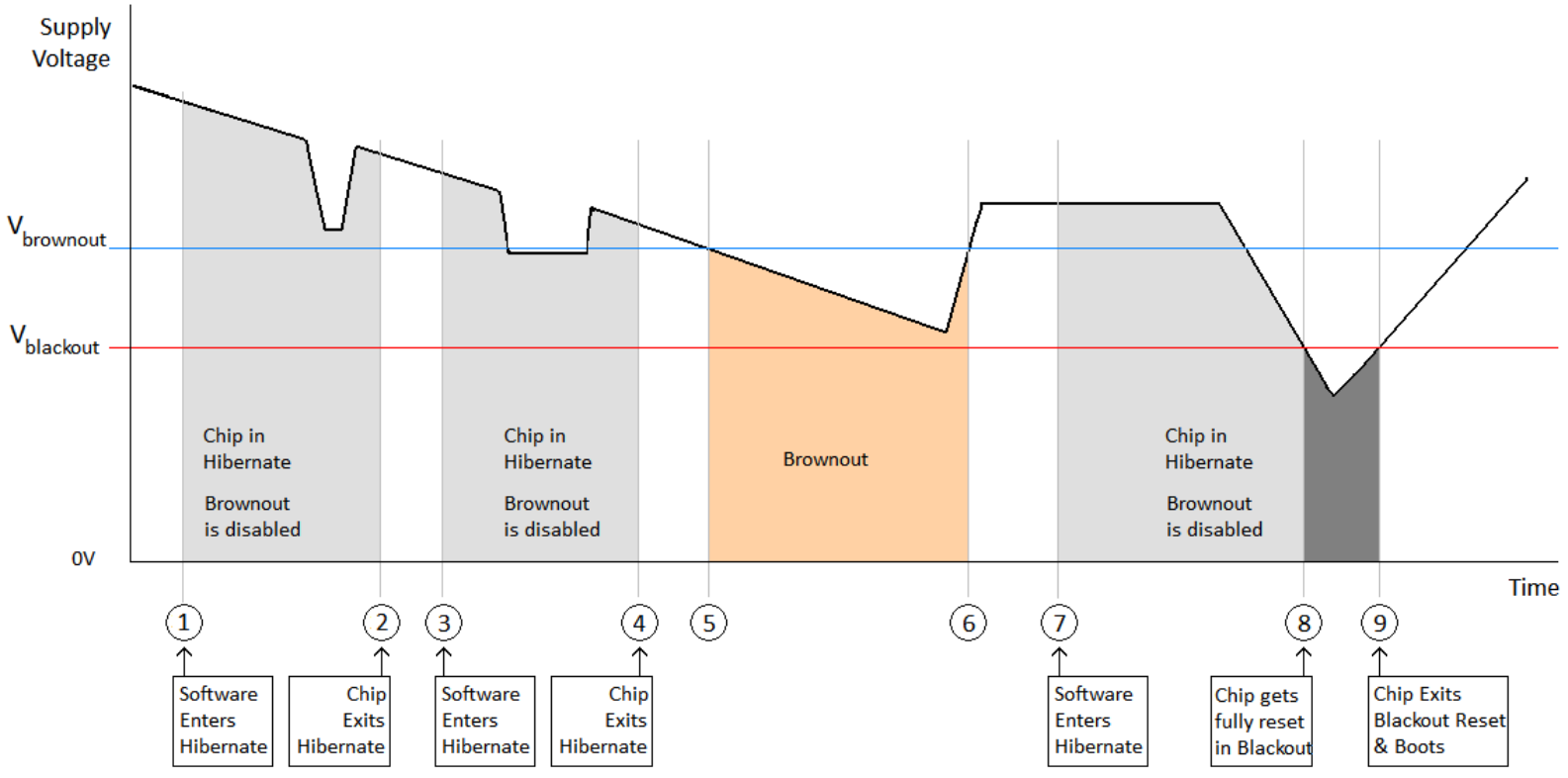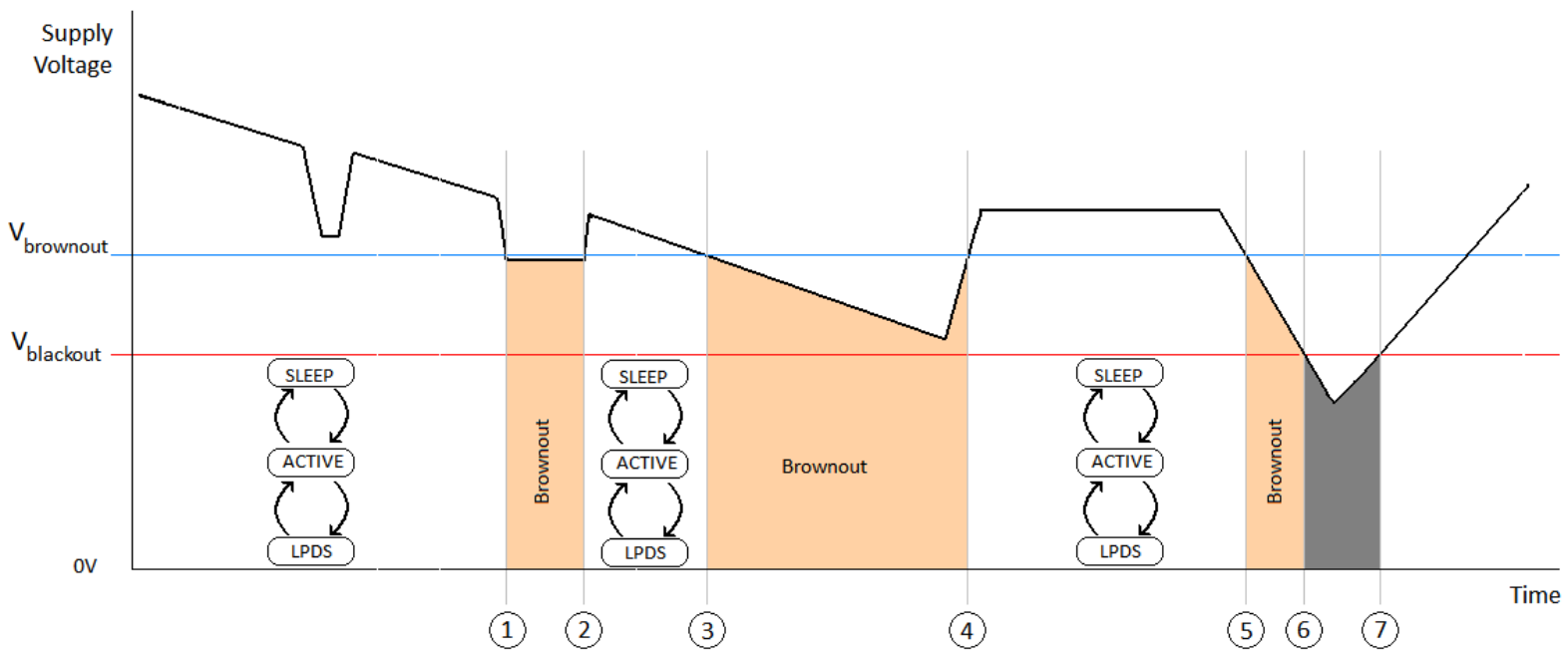ZHCSM59B November 2014 – September 2020 CC3100MOD
PRODUCTION DATA
- 1 特性
- 2 应用
- 3 说明
- 4 功能方框图
- 5 功能方框图
- 6 Revision History
- 7 Terminal Configuration and Functions
-
8 Specifications
- 8.1 Absolute Maximum Ratings
- 8.2 ESD Ratings
- 8.3 Power-On Hours (POH)
- 8.4 Recommended Operating Conditions
- 8.5 Power Consumption Summary
- 8.6 TX Power and IBAT versus TX Power Level Settings
- 8.7 Brownout and Blackout Conditions
- 8.8 Electrical Characteristics (3.3 V, 25°C)
- 8.9 WLAN RF Characteristics
- 8.10 Reset Requirement
- 8.11 Thermal Resistance Characteristics for MOB Package
- 8.12 Timing and Switching Characteristics
- 8.13 Host UART
- 9 Detailed Description
- 10Applications, Implementation, and Layout
- 11Environmental Requirements and Specifications
- 12Device and Documentation Support
- 13Mechanical, Packaging, and Orderable Information
8.7 Brownout and Blackout Conditions
The module enters a brownout condition when the input voltage dips below VBROWNOUT (see #SWAS0328939 and #SWAS0317478). This condition must be considered during design of the power supply routing, especially if operating from a battery. High-current operations, such as a TX packet or any external activity (not necessarily related directly to networking) can cause a drop in the supply voltage, potentially triggering a brownout condition. The resistance includes the internal resistance of the battery, contact resistance of the battery holder (four contacts for a 2× AA battery), and the wiring and PCB routing resistance.
When the device is in the Hibernate state, brownout is not detected; only blackout is in effect during the Hibernate state.
 Figure 8-4 Brownout and Blackout Levels (1 of 2)
Figure 8-4 Brownout and Blackout Levels (1 of 2) Figure 8-5 Brownout and Blackout Levels (2 of 2)
Figure 8-5 Brownout and Blackout Levels (2 of 2)In the brownout condition, all sections of the CC3100MOD (including the 32-kHz RTC) shut down except for the Hibernate module, which remains on. The current in this state can reach approximately 400 µA. The blackout condition is equivalent to a hardware reset event in which all states within the module are lost. Vbrownout = 2.1 V and Vblackout = 1.67 V